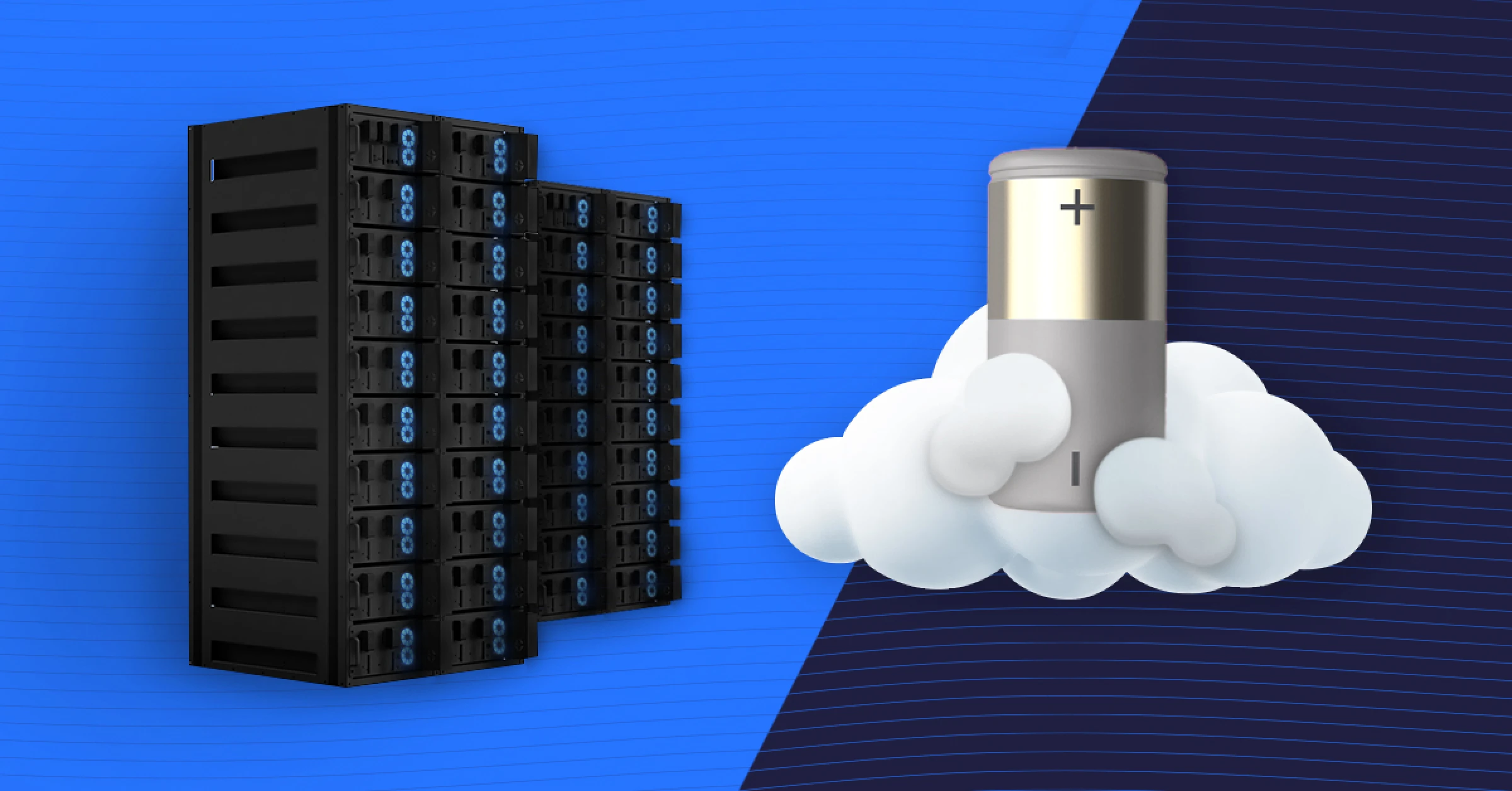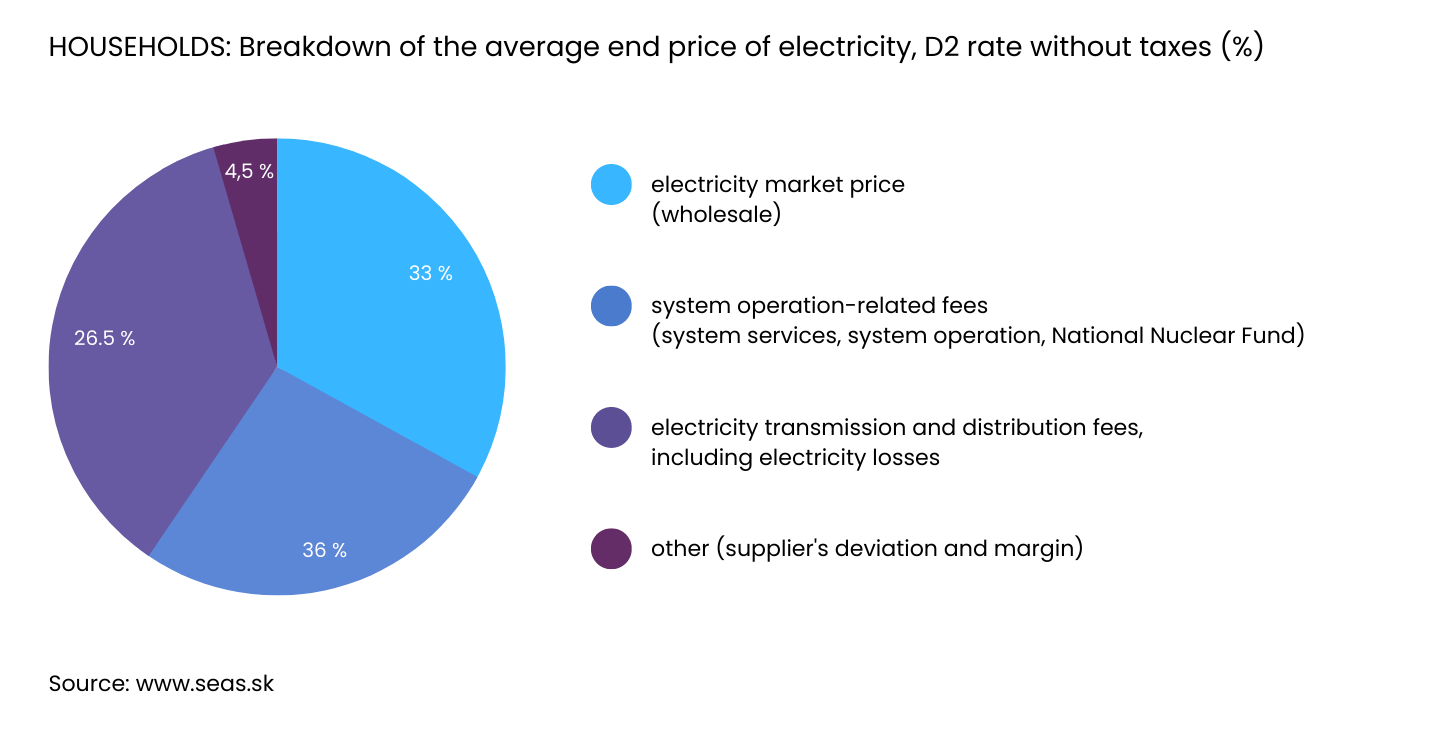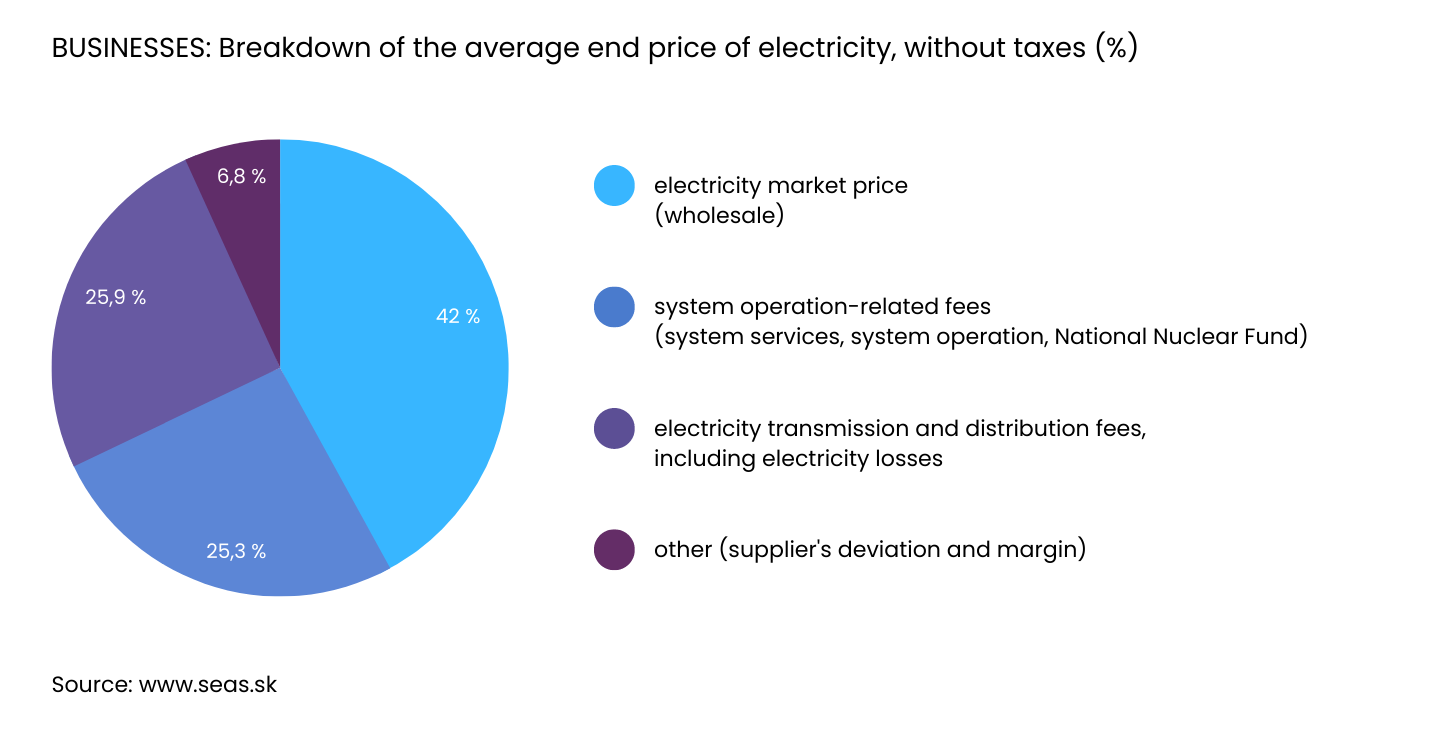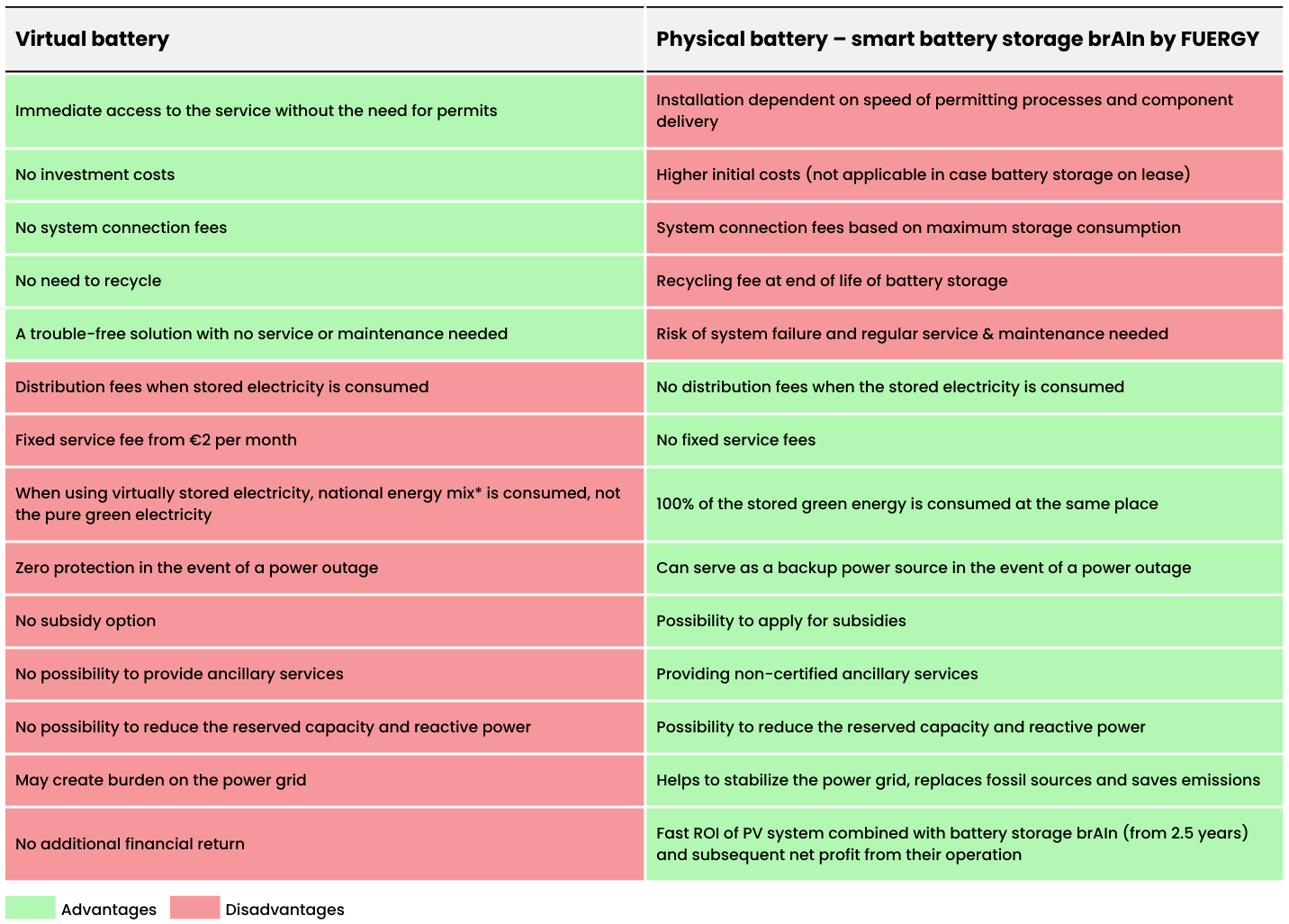
The most suitable way to utilize surplus solar energy is to store it and consume it later.
There are two options for storage currently available on the market - virtual and physical batteries. What is the difference between them and what does each offer?
What is virtual battery?
This is a battery that does not exist physically. Excess solar energy simply flows through the smart meter back to the power grid. The electricity supplier, as the one providing the virtual battery service, monitors these flows using the smart meter’s online data and records it in a customer’s account.
However, as soon as the electricity passes through the smart meter, the “stored” solar energy merges with the energy mix in the power grid and gets consumed by other consumers almost immediately, leaving only a digital record of the electricity.
Fees for storing surpluses
Sending surplus electricity back to the grid in order to store it in a virtual battery is usually free of charge. However, when you want to use it, you need to pay distribution fees again, minus the electricity market price. Considering that these distribution fees make up to about 67% of the total price of electricity for households and 58% of the price for businesses, it's like buying your own electricity again at a 33% discount (in the case of households) or a 42% discount (in the case of businesses).


The electricity supplier, on the other hand, gets your electricity for free and still charges you a monthly fee for the virtual battery service.
Virtual batteries have been supported by a strong media campaign, leading to their position as often the first choice for solar panel owners. However, the electricity supplier may make more money on this service than the solar panel owners themselves. Especially today, when the price of electricity is high but suppliers still provide "cheap" electricity when purchased in advance.
If you want to make more money on your surplus solar electricity without installing any other technologies, look for solar buyback options which usually reflect current electricity prices.
What is physical battery?
On the other hand, a physical battery is installed on-site, close to the electrical switchboard, and is meant to store excess solar energy or off-peak electricity. These are still quite expensive devices so the payback period might be a bit unattractive, though with today's energy prices, this is certainly not the case so much anymore.
In order to demonstrate the major difference between virtual and physical batteries, we will use our brAIn smart battery storage by FUERGY as an example. It offers more functionality than a basic physical battery, more sophisticated green energy management and more attractive payback periods despite installation and setup fees, even considering recycling at the end of its lifetime.
Virtual and physical battery comparison
To learn more about our battery system, we recommend you read our blog article "A guide to the high capacity smart battery storage brAIn by FUERGY".
But for now, let's see which battery offers more benefits:

The national energy mix provides an overview of the share of each energy source in the total generated electricity. The Slovak energy mix can be found here.
To sum it up, a virtual battery is definitely the easier option, but it would only be worth a go if there was no other alternative available.
The advantages of the brAIn physical battery storage are clear, especially when it comes to the most important factors, such as financial savings. Even though installing physical storage may be a bit more time consuming, this certainly does not pose a problem. For a technology that pays for itself without you even knowing, it's simply worth the wait. Not to mention that you become more energy self-sufficient, environmentally friendly, and in a few years when all the technology is paid off, the system will generate net income for you.
Physical battery on lease
As the comparison shows, higher initial costs tend to be one of the primary barriers when considering physical batteries. Usually, the determining one.
Luckily, there is an Energy as a Service model, or in other words, battery storage on lease, which effectively solves this problem. In addition to zero investment costs and all the benefits associated with the operation of physical storage, you also receive a share of the generated savings. The owner of the storage is an investor or other third party, who is entitled to the largest share of the savings. Either the storage is owned by the investor for the entire approximately 15-year lifetime of the batteries or it is offered to you for buy-back after a certain period of time.
Although battery storage on lease is currently only available for businesses and larger delivery points, we believe it will soon be extended to households as well. Because every single energy customer deserves access to greener and cheaper electricity.
At FUERGY, we are creating a better future of energy. One in which every customer is an integral part, participates in process improvements, and helps to save costs and unnecessary electricity waste, and for all of that is rewarded financially.
Let's create it together. Contact us today. Our experts are here to help you find a tailor-made solution to your needs.
New dimension of energy optimization





